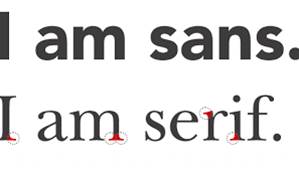Camera movement and editing
Camera movement: notes
There are a range of key camera movements we need to learn:
Pan: horizontal turn left or right
Used to follow movement. A whip pan (very fast pan) can create a feeling of action or drama.
Track/Dolly: Camera moves on tracks/wheels
Tracks action smoothly – look for in chases or fast-moving sequences.
Handheld: camera held by hand, often shaky
Handheld camera can add urgency, realism, pace or unease to a scene.
Zoom: focal length of lens changed to make subject appear closer or further away
A zoom into a character’s face can show realisation or an emotional reaction.
Crane: Camera attached to crane – can pan, track or ‘swoop’ in or out as required
Crane shots are often high angle and show large, epic scenes of dramatic action.
Tilt: Camera tilts up or down from fixed point
The hero or villain can be made to look weak or powerful using a tilt (high/low angle).
Editing: notes
Video: cuts and transitions
Film transitions
Cut (Straight cut, jump cut, match cut): Shot changes from one to another – the most common cut.
Dissolve: Shot melts into another – often shows passing of time.
Fade: Shot fades away and another shot appears. Fades to black often signify endings (of the day, scene or film)
Pace of editing
The speed at which the film cuts from one shot to the next makes a huge difference to the experience for the audience. Generally, slow cuts build tension while fast cuts suggest action and excitement.
Juxtaposition
The word juxtaposition literally means ‘the act of placing together side by side’. In editing, this is called Parallel Editing.
In film, two shots may be placed together to create meaning for the audience. E.g. A shot of the hero may be followed by a shot of his love interest to link these in the audience’s mind.
Video: cuts and transitions
Film transitions
Cut (Straight cut, jump cut, match cut): Shot changes from one to another – the most common cut.
Dissolve: Shot melts into another – often shows passing of time.
Fade: Shot fades away and another shot appears. Fades to black often signify endings (of the day, scene or film)
The speed at which the film cuts from one shot to the next makes a huge difference to the experience for the audience. Generally, slow cuts build tension while fast cuts suggest action and excitement.
Juxtaposition
The word juxtaposition literally means ‘the act of placing together side by side’. In editing, this is called Parallel Editing.
In film, two shots may be placed together to create meaning for the audience. E.g. A shot of the hero may be followed by a shot of his love interest to link these in the audience’s mind.
Camera movement and editing: blog tasks
We need to be able to recognise and analyse the camera movement and editing when studying film or television. As ever with media, we need to be able to explain the effect this camerawork has on the audience. What connotations are created by using this style of filmmaking?
We need to be able to recognise and analyse the camera movement and editing when studying film or television. As ever with media, we need to be able to explain the effect this camerawork has on the audience. What connotations are created by using this style of filmmaking?
Blog tasks:
1) Pick three aspects of camera movement in the Minority Report clip. Identify the type of camera movement and write about why the director chose to use that camera movement in the scene and what effect it has on the audience.
The camera pans over to the main character as he moves at the start, establishing where our focus should be, the movement is quick and purposeful which suggests he's going somewhere. When the camera cuts it tracks over some men quite quickly, it's fast pace and snappy which connotates a sense of urgency to the scene. When the main character is reported as a criminal, it is shown on the newspaper. This is done with a zoom that closes in on the the paper, this connotates the importance of the scene and establishes to the audience that our protagonist has done something serious and illegal.
2) Pick two aspects of editing in the Minority Report clip and write about what effect it has on the audience.
The editing shows mostly cuts that are quite closely put together which makes it quite jumpy, this adds to the pacing of the chase as it feels like everything is happening quite quickly all at the same time. There is also juxtaposition in the scenes as it cuts from an intense chase scene to the inside of a home with a family moving at a casual slow pace, only for their windows to be smashed in a moment later.
3) Finally, revise last week's work on camerawork by picking out two shots or camera angles in the clip that communicate meaning to the audience.
The Extreme long shot shows the stakes of the scene as the character is on a ladder high up in the air whilst fighting his pursuers, it shows us the action in the scene and how vulnerable he is in that current moment. The High angle shot as the protagonist climbs the ladder shows how high he has already climbed and puts him at a disadvantage as he appears weaker from advantage point.






Comments
Post a Comment